Connie’s Story: Preserving the magic of the kelp forests with a mix of Indigenous knowledge and science
By Climate Champions | September 4, 2024
An interview with: Connie Crocker (Xwulslim), First Nations Liaison with The Kelp Rescue Initiative (KRI)
Country & Region: Bamfield, British Columbia, Canada
Breakthrough: Marine Conservation, Aquafood
Beneficiaries / Impact: Kelp forests, often resembling underwater jungles, are not plants but algae. Kelp forests are vital, supporting countless species, regulating water quality, and reducing ocean acidity. They also protect coastlines from storms and erosion, much like coral reefs. Covering one-third of the world’s coastlines, kelp forests are five times larger than coral reefs. A quarter of all the world’s kelp species are found along the Pacific Northwest, where bull and giant kelp create canopy forests that provide critical habitat for species like salmon, lingcod, herring, rockfish, crabs, shrimp, and sea stars. Marine mammals, including whales and sea otters, rely on these forests for food and protection, while sea lions hunt fish within them. People, too, depend on kelp for their livelihoods, coastal protection, and as a carbon sink in the fight against climate change—kelp absorbs significant amounts of CO2. Despite their ability to grow up to 25 cm a day, kelp forests worldwide are suffering. Kelp loss along North America’s west coast varies, with some areas losing 20-70% while others remain stable. Increasing water temperatures and sea star wasting syndrome— which decimates urchins’ primary predator — are major threats. Without sea stars, urchins are overpopulating and devouring kelp at alarming rates, destroying these ecosystems from the bottom up. With Canada boasting one of the largest coastlines in the world, solutions developed here could have a substantial global impact.
Connie Crocker, an elder from the Pune’luxutth Tribe, carries a deep appreciation for the culture and traditions of First Nations peoples. Raised on a 40-acre reservation at the north end of Galiano Island — one of the Southern Gulf Islands located between the east coast of Vancouver Island and the mainland of British Columbia, Canada — she grew up alongside her three sisters and two brothers, living closely connected to the land and sea. Her family’s strong roots in commercial fishing naturally led Connie to spend over 20 years in the industry. However, as the fishing industry declined, Connie, like many others in her community, sought new paths forward.
Connie transitioned to a role with Fisheries and Oceans Canada (DFO), where she became a leader in managing both freshwater and marine resources. She also served on her tribal council, working as a liaison between First Nations and conservation efforts, bridging gaps in communication and culture. Today, Connie works with KRI at the Bamfield Marine Science Centre (BMSC), focusing on restoring healthy oceans and supporting coastal communities. Her work is informed by her rich heritage and lifelong connection to the sea.
The Edges team met with Connie as part of an ongoing series to support the Climate Champions’ Ocean Breakthroughs. The protection, conservation and/or restoration of coastal and marine ecosystem, which include kelp forests, can contribute to achieving the long-term temperature goal of the Paris Agreement. The Ocean Breakthroughs has set collective of goal of securing investments of at least $72 billion to secure the integrity of ocean ecosystems by protecting, restoring, and conserving at least 30% of the ocean for the benefit of people, climate, and nature. Connie’s work to enhance First Nations capacity to restore and monitor kelp is funded by DFO through the Aquatic Ecosystems Restoration Fund. Below, Connie, tells her story of life among the fish.
—
Growing up on Galiano Island in a tribe of about 400, our lives revolved around the ocean. The island’s waters were rich with cod, salmon, herring, and shellfish, providing year-round work for my dad and his brothers. They would start with spring salmon, move on to sockeye in the Fraser River, and then fish for herring in various spots. My dad’s favorite place to fish was Hornby Island, where I have some of my most fond memories with him, as I started fishing with him when I was five.
I lived at a place called Porlier Pass, which was abundant with salmon and lingcod, making our community a vibrant place. The marina even attracted people from across the globe, including Japanese, Greek, and First Nations fishermen, all drawn by the abundance of fish. The Japanese fishermen built a herring saltery before World War II. But, my dad and his brothers began with lingcod before transitioning to salmon fishing.
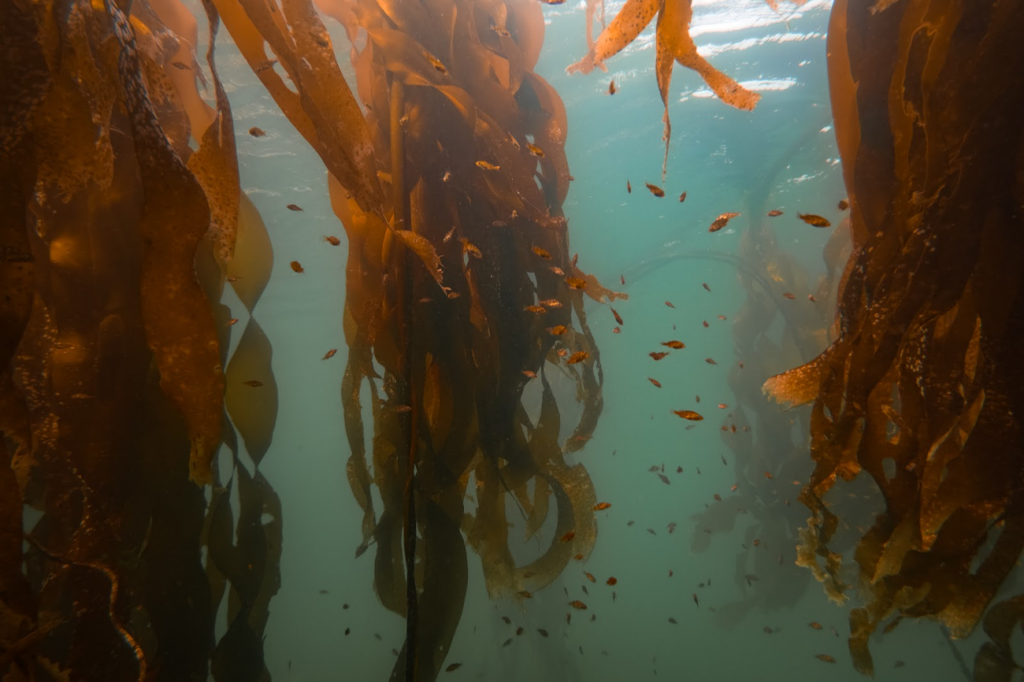
Fish among the kelp off the coast of British Columbia. Photo Credit: Andrea Humpfries
It was a prosperous time, and the lifestyle was incredible. We were six children — I had three sisters and two brothers — and the fishing life was so ingrained in us that we all pursued careers in the industry. I eventually bought a fish packer boat and spent several successful years buying coho and sockeye salmon.
However, by the time I was 30, the fish stocks had declined so severely that I had to sell my boat and retrain for a different career. Overfishing, particularly by commercial operations, had decimated the resources we once took for granted. This decline forced not just me, but all my siblings, to leave the industry. The fleet that once numbered 600 local seine boats has dwindled to just 60, with only about 40 Gulf trollers left — none of them making a viable living. What was once a thriving, abundant resource has nearly vanished. Yet, despite the decline, those years on the water gave me a rich and fulfilling life that I wouldn’t trade for anything.
A LIFETIME OF WITNESSING DECLINE
The decline began with the herring. Every March, my dad and brothers would go out and practically wipe out the herring stock, especially around Hornby Island, which was a major fishery at the time. The herring fishery didn’t last long before it was depleted. Herring were the foundation of the food chain, and without it, everything else started to decline too.
My dad’s boat, a Japanese-style double-ender, would hold herring on one side and live cod on the other, like an aquarium. When I was a child, you could look out our window and see herring balls right there in Porlier Pass, with seagulls diving after them. But it only took about ten years of overfishing to decimate the herring population.
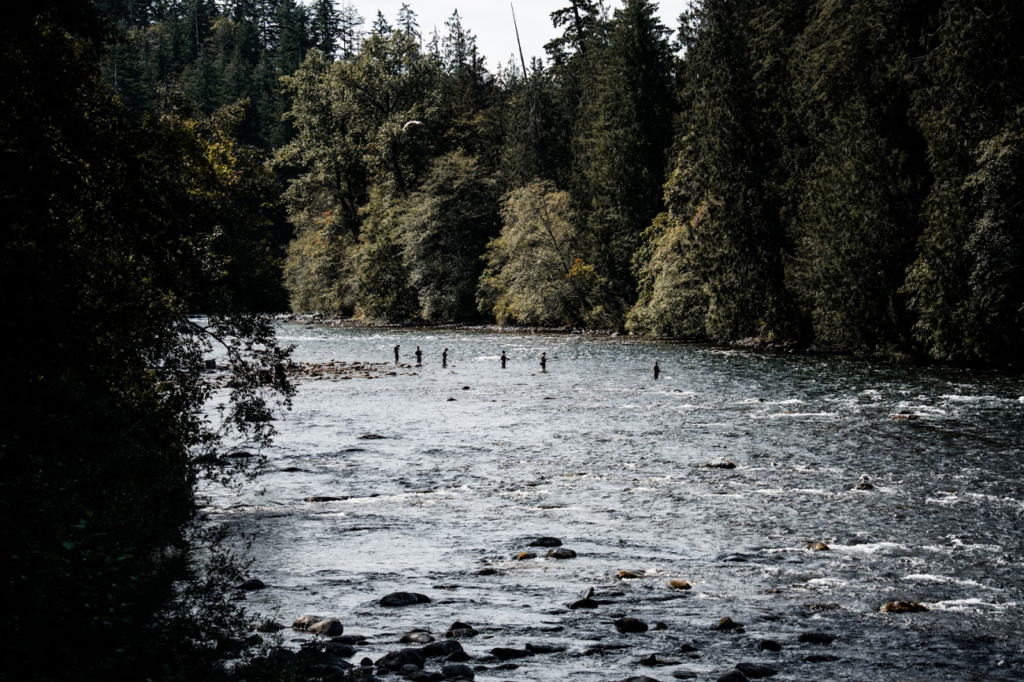
Fishing in rivers on Vancouver Island. Photo Credit: Adam Moore
Once the herring were gone, the salmon were next. The entire industry collapsed after that. My dad used to catch over 300 coho salmon in 15 days around Hornby Island — my favorite, even more than sockeye. But those numbers dwindled to 125, then even less. Today, if we want salmon, we have to rely on a hired seine boat to catch them for us, which is a sad reality and quite ironic. The coho, along with the herring, are essentially gone from the way in which I remember it.
In my opinion, to truly restore fish populations, we need to halt all fishing for at least five years — across all sectors.
I’ve seen glimpses of hope, like the successful sockeye run in 2010. I thought it marked the start of a recovery, but the following years didn’t deliver the same promise.
Marine parks play a crucial role in this effort, providing safe havens where species can reproduce without pressure from fishing. But we also need to stop overfishing altogether or switch to selective gear that doesn’t decimate stocks. Without such comprehensive actions, we won’t be able to revive these ecosystems. The decline in returns is dismal, both for fish stocks and the outlook for commercial fishermen.
However, kelp could be the key to reviving our fish stocks as well. Kelp forests are integral to these fish’s reproductive cycle, providing a critical habitat for laying eggs. Unfortunately, places like Hornby Island, once thriving with kelp, have seen severe depletion over the past 25 years due to, yes, overfishing, but also significant environmental changes due to human actions.
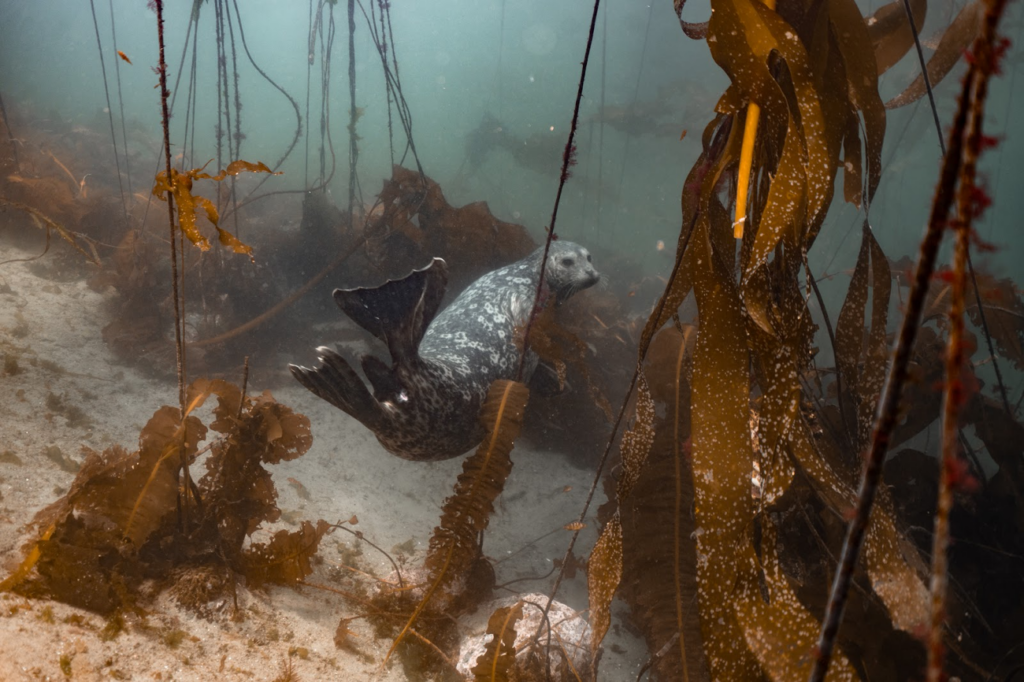
Many animals use kelp forests as their home. Photo Credit: Andi Cross
That’s why I joined a project focused on restoring kelp. KRI is all about asking the right scientific questions, forming strategic partnerships, and creating scalable solutions. We’re conducting foundational research — including fieldwork, genetic testing, and modeling — at the Bamfield Marine Sciences Centre on Vancouver Island. This research helps us understand kelp’s role in the ecosystem and guides our restoration efforts.
But research alone isn’t enough. KRI believes in the importance of strategic partnerships, bringing together scientists, policy makers, environmental organizations, and First Nations to tackle the kelp crisis. We’re all working toward the same mission: to restore kelp forests on a large scale, faster than their current rate of decline. Our “hot spots” – areas like Barkley Sound, The North Salish Sea (Hornby and Denman Island, Comox area), Burrard Inlet and Broughton Archipelago — are key focuses for these efforts.
Given that Canada’s coastline is ten times longer than the U.S., even a small success here could have a massive impact. My role in KRI involves engaging with First Nations to raise awareness about kelp’s decline and the urgent need to act. It’s a long process, building trust and understanding, but it’s vital. Kelp is a lifeline for the ocean ecosystem and for the coastal communities that depend on it.

Kelp grows at a rapid rate of 25 cm per day. Photo Credit: Andi Cross
WORKING WITH FIRST NATIONS
Today, my role involves engaging with First Nations to raise awareness about the decline of kelp — a decline many are unaware of because, like so many of us, they’ve taken kelp for granted. Often, they don’t realize that the kelp around them has diminished by more than half. While there’s interest in learning more, there’s also a deep-rooted distrust of organizations, especially the government, due to a long history of oppression over the last 150 years. This distrust is understandable and makes building relationships and trust a slow process.
Many First Nations believe that nature will correct itself over time, so the loss of kelp might not seem like a problem. However, they are still open to listening and considering new information, though it requires time for discussion and reflection. There are also cultural beliefs, like viewing urchins as sacred, that differ from scientific perspectives — especially when overpopulation of urchins threatens kelp forests.

Urchins taking over a kelp forest on the shorelines of Vancouver Island. Photo Credit: Adam Moore
The decline of kelp significantly impacts First Nations communities, many of which, like my own, face poverty and isolation. My family and I experienced the harsh reality of residential schools, which were designed to strip us of our native language and customs. These schools, funded by the government and Christian groups, forcibly took children from their families to teach them new ways, erasing our cultural identity. My parents, fluent speakers of Hul’qumi’num, never spoke it at home because of this oppressive system, and I didn’t even know how to spell my cultural name until ten years ago. This painful history still affects our people today, creating intergenerational suffering.
That’s why my job with KRI is so important — I need to show that we are an organization they can trust, one that values their wisdom and knowledge about living off the ocean for generations. I’m currently working with my tribe and six others. My challenge is to communicate what’s at stake and how their traditional knowledge can contribute to kelp restoration. Awareness is key — once people understand the importance of kelp, they can use their skills to help preserve what’s left and restore what’s been lost.
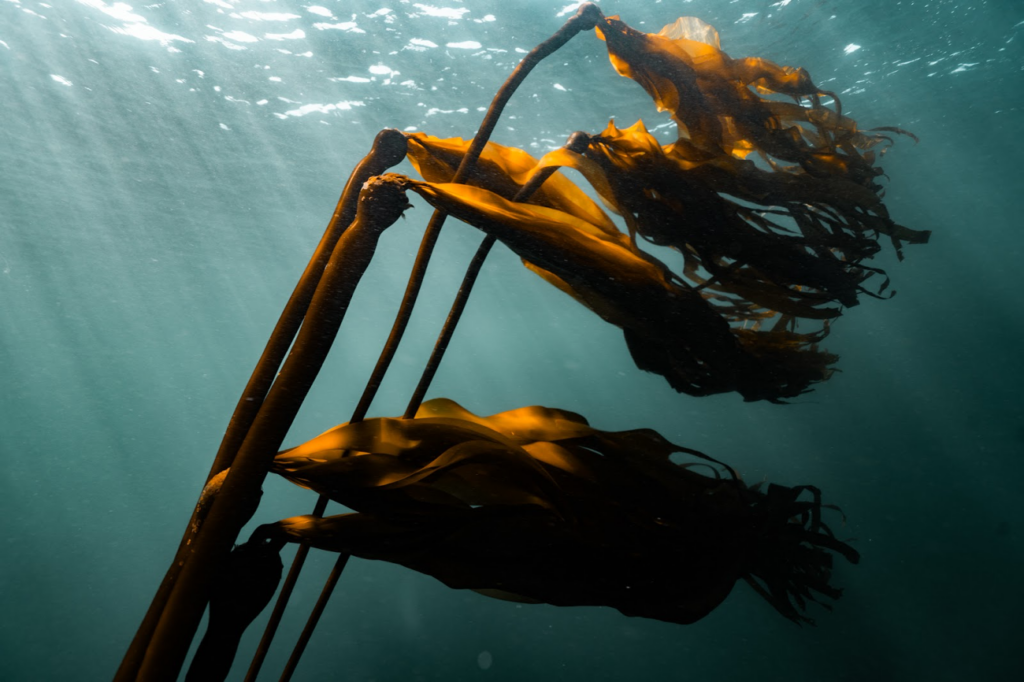
Kelp in the wild off the coast of British Columbia. Photo Credit: Andi Cross
A significant part of my work involves raising awareness about kelp forest importance (for marine ecosystems and people), the current state of decline and how we can help the kelp. I work with First Nations to identify needs for capacity-building training related to kelp restoration and monitoring that KRI can provide. This training is particularly appealing to First Nations communities with guardian groups responsible for stewarding their coastal waters.
These guardian groups, which vary in size depending on the community, are vital. For example, the Comox region has six guardians with several boats, while smaller nations like Qualicum have fewer resources. Involving kelp in their stewardship practices is essential for the health of the ocean and the success of our conservation efforts. Working with these guardians is crucial if we want to see real change, which is why this role is so important.
IT’S NOT JUST OVERFISHING THAT’S THE PROBLEM
Climate change is a major threat to our oceans and communities. I remember summers on Hornby Island with my dad, fishing in waters that were warm even back then. Today, those waters are even warmer — like California during its hottest months. This warming is disrupting marine ecosystems, and I’ve witnessed the effects firsthand. We often hear dire warnings about climate change, that there’s no turning back. But we need to focus on positive, actionable solutions. Kelp offers a sustainable way forward. It absorbs CO2, neutralizes ocean acidity, and produces oxygen. Kelp can also be used in commercial ventures, like cattle feed that reduces methane emissions. It’s clear that kelp is a powerful tool, which is why raising awareness about its importance has become my mission. Many in my community are concerned about climate change but don’t know what they can do. Kelp is a tangible solution we can act on now.
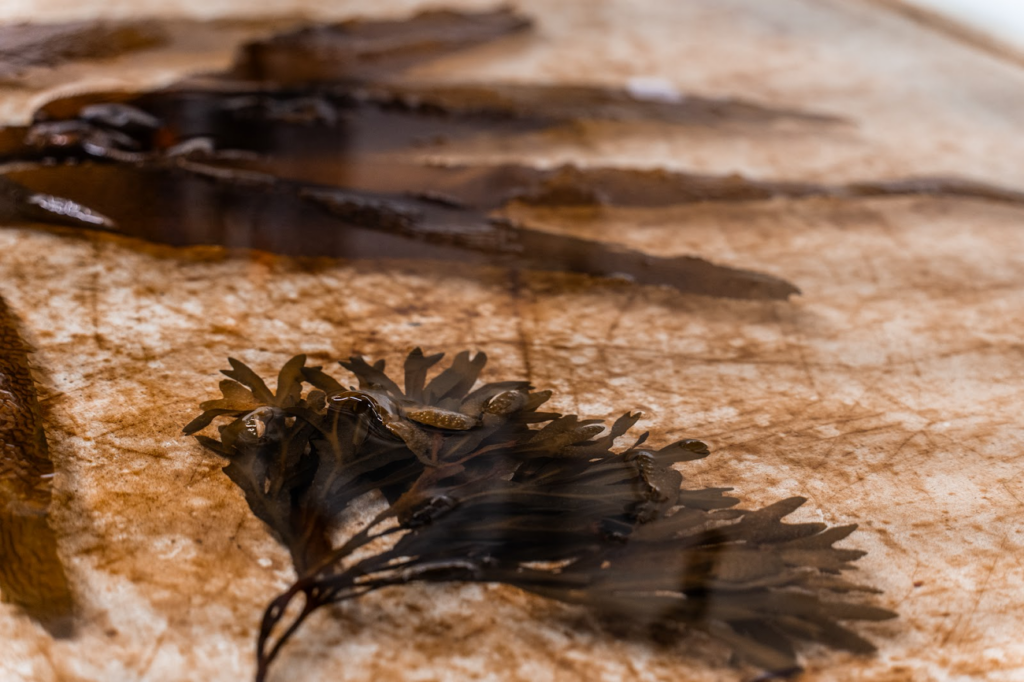
Kelp studies taking place at BMSC with the KRI team. Photo Credit: Adam Moore
Establishing kelp restoration projects in First Nation communities would support local marine ecosystems and economies through biodiversity co-benefits. However, the challenge is that we can’t see the kelp’s decline from land — it’s happening beneath the surface. That’s why our KRI dive team shows us these ecosystems, shares their findings, and I bring this information to First Nations. People need to understand what’s happening under the ocean’s surface.
When I left fishing and started working at Fisheries and Oceans Canada, I felt disconnected from the ocean that had shaped my life. Although the job paid the bills, it didn’t fulfill me. I now spend my days focused on kelp because so much is at stake. I want my grandchildren to experience the ocean as I did. The ocean gave me so much, and now it’s my turn to give back by helping to preserve it.
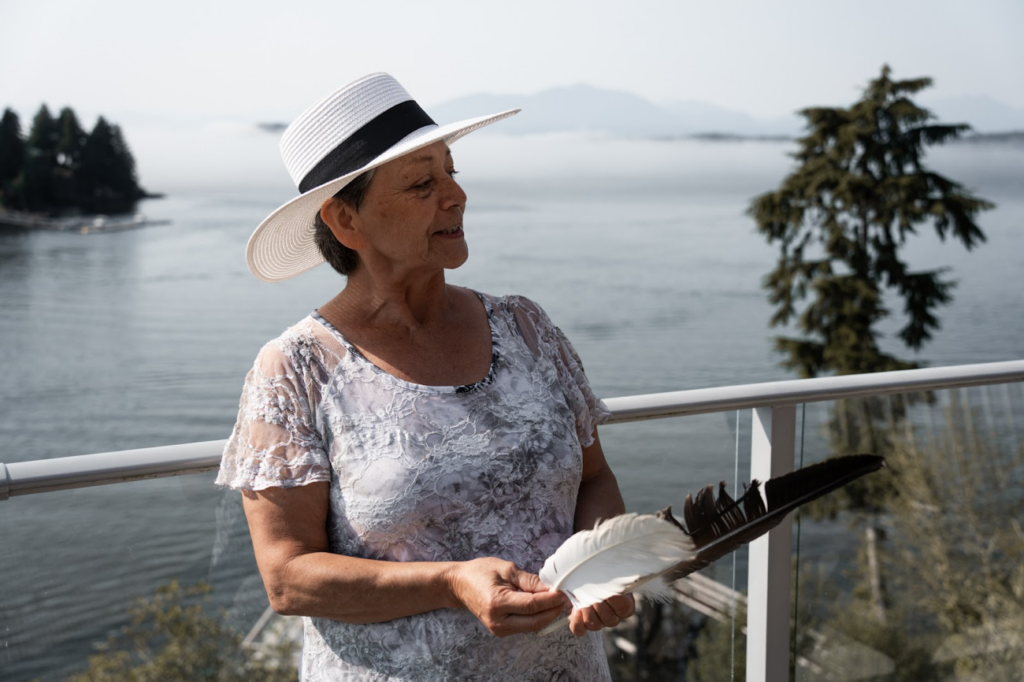
Connie gifting the Edges of Earth team eagle feathers she found. Photo Credit: Adam Moore
We often take the ocean for granted, just as I did until I could no longer be near it every day. I want my grandchildren to know what the ocean is supposed to look like and how it’s changed over the 50 years I’ve worked on it. If we don’t act now, the ocean could be barren by the time they’re my age. People will step up when they know what’s at stake. I’ve seen it happen. Kelp isn’t just the work of scientists, conservationists, or First Nations alone; it’s something we all need to do together. There’s strength in numbers, and we need everyone’s help to restore kelp forests because without them, the ocean ecosystem as we know it could collapse. My work is to never stop talking about this in hopes that the more I do, the more action is taken.
As told to Andi Cross in August 2024.
ABOUT THE OCEAN BREAKTHROUGHS
Resulting from the joint efforts of the Ocean & Coastal Zones community and building on the Ocean for Climate Declaration, the Ocean Breakthroughs have identified five turning points to reach by 2030 in order to achieve a healthy and productive ocean in 2050. These five turning points are focused around the most crucial ocean sectors: marine conservation, ocean renewable energy, shipping, aquatic food, and coastal tourism. Accelerated action and investments in each will help unlock the potential of the ocean as a source of solutions to the pressing challenges posed by climate change and biodiversity loss.
The scientific evidence is clear: as a major climate regulator and the largest living space on Earth, the ocean is integral to deliver on the goals of the Paris Agreement and the Global Biodiversity Framework. The Ocean Breakthroughs are science-based targets designed to boost mitigation and adaptation efforts, for the benefit of People and Nature. They will contribute to delivering on the global campaigns led by the UN Climate Change High-Level Champions, namely the Race to Resilience and Race to Zero, and their respective action agendas: the Sharm-El-Sheikh Adaptation Agenda and the 2030 Breakthroughs.
ABOUT THE HLC X EDGES OF EARTH EXPEDITION
The women-led global expedition, Edges of Earth, has partnered with the UN Climate Change High-Level Champions (HLC) to bring to life the Ocean Breakthroughs initiative by sharing personal accounts and climate action stories from remote coastal communities. This media partnership will feature interview-style stories that highlight the experiences and efforts of locals, Indigenous communities, nonprofits, and ocean scientists in addressing climate change. Celebrating its one-year anniversary, Edges of Earth has traveled to 25 countries (with nearly 30+ more to go throughout 2025) working closely with diverse groups to understand and amplify their climate resilience strategies. Through this collaboration, Edges of Earth will spotlight the five Ocean Breakthroughs by showcasing diverse voices and solutions to accelerate global climate action.
Main image: Portrait of Connie Crocker—Xwulslim—at Bamfield Marine Science Centre. Photo Credit: Adam Moore









